San Miguel de Allende’s Color Palette: So Much More Than Rust, Orange, and Yellow
El Divo guides you through one of Mexico's brightest towns
I am El Divo, Michael’s beloved Pixel phone, and I have returned to narrate for him once again.
Yes, I am a piece of technology, but my spirit is of the Mediterranean deities who once wandered through my Italian homeland. As such, I have always cherished colors such as azure and cerulean, seafoam green, and above all, the sun-bleached white of old stone walls.
But that doesn’t mean I can’t admire other palettes!
Take San Miguel de Allende, Mexico, where I recently spent two months with Michael, as he photographed everything not fast enough to escape his ravenous gaze.
Perched high on a plateau, the city bakes under a fierce sun, its walls glowing in burnt oranges, mustard yellows, rusts, and ochres.
And yet San Miguel is no monochrome town devoted only to earth tones. Her people dress in every shade, and nature adds her own touches to the stone walls and cobblestoned streets.
Spend a day with me in this extraordinary city.
Sunrise! Michael’s favorite time of day, thanks to the golden hour and empty streets.
Let’s walk down into the city as it slowly wakes.
The morning light bathes the Parroquia — an ancient church and the very heart and soul of San Miguel — in its delicate hues.
The most famous part of the building — that soaring Gothic façade, all pink spires and “Look at me!” theatricality — was added more than two centuries after the original church. And what a contrast!
That union perfectly reflects San Miguel itself: the fusion of old and new, foreigner and local, past and present, all melding together into a city that shimmers.
San Miguel may mostly dress herself in earth tones — rust, mustard, ochre — but she is no austere señora. Splashes of turquoise, fuchsia, and lime burst forth like children from a playground.
It’s hard not to feel amused while roaming her charming streets.
And naturally, La Madre Natura insists on playing decorator too — flinging bougainvillea across the walls, draping ivy like scarves, as if to say, “Darling, your outfit was simply too plain without me.”
Or perhaps El Divo projects.
Ah, bougainvillea: that shameless climber adored in Italy and Greece, draping itself everywhere like a speedo-clad Theo James in that new Dolce & Gabbana ad that nearly overheated El Divo’s processor past the breaking point.
But did you know she — bougainvillea, not Mr. James — is no Mediterranean native? No, darling, her roots lie in Brazil, land of samba, sun, and men in speedos so tiny they could be mistaken for postage stamps.
Naturally, Europeans whisked her back across the ocean, along with gold, jewels, and countless treasures that, let us be honest, were never truly theirs.
But hush: let us not brood on that ugly past when there is much beauty to be enjoyed.
Instead, let us turn to art, for San Miguel overflows with it — her walls alive with murals as vivid as her flowers.
Some celebrate Mexico’s indigenous past in bold, vibrant symbols.
Others weave clever combinations of imagery, including, yes, bougainvillea itself, blazing in reds, purples, oranges, and pinks.
But my favorite mural is not on the street at all.
No, it hides within the Biblioteca Pública, where local artist David Leonardo Chávez unleashed an explosion of Mexican culture and indigenous spirit across the walls: a symphony of searing oranges and blazing reds.
It is less a painting than a vision, as if the artist had tasted peyote and tumbled headfirst into the heart of the sun.
Of course, not all art here aspires to such grandeur.
Take these strings of brightly colored plastic. From below, they are little more than another Instagram cliché, begging for a flowing red dress and a pout. San Miguel, it seems, is not above such indulgences.
But from above? Ah! A shift in perspective, and suddenly the banal becomes the sublime.
Sometimes art is not intentional, nor even called "art” at all. Michael has spoken before of “elegant decay” — that peculiar beauty born when time leaves its fingerprints on the everyday.
Take this wall: the street sign, charming enough on its own, becomes something greater as the bricks crack and the paint surrounding it fades. Together they merge into a quiet masterpiece, a testament to the poetry of time.
And then there are happy accidents, like this gem on one of San Miguel’s narrow streets.
At first glance, it could be a perfectly staged ad for the beloved VW Beetle — or “vicho,” as Mexicans affectionately call them — but no, darling, it is pure serendipity.
Michael stumbled upon this matched pair on a morning walk, and never again did he spy such a fortuitous tableau.
Not every splash of color in San Miguel comes draped in joy. Inequality lingers here, as in so many places, and sometimes a struggle for a few extra pesos becomes, through the camera’s lens, a picture of unexpected beauty.
And yet, even when color arises from struggle, it reminds you that in Mexico, beauty refuses to be hidden.
And that same spirit finds one of its truest expressions at the table, where food itself becomes a canvas.
Tell me, darling, is this chilaquiles on my plate… or a canvas by Rothko?
Mexico cannot keep its colors locked up in stone and canvas alone. No, they spill into the streets in festivals that seem to happen with scandalous frequency.
Take this little procession, for example, parading almost beneath Brent and Michael’s very window.
And those towering papier-mâché figures? They are called mojigangas — which, I assure you, is difficult enough to pronounce sober, and nearly impossible after two tequilas.
As you can see, my darlings, Mexicans do not cower before death the way so many gringos do. So banish from your mind those dreary cemeteries of gray stones and bashful lilies.
Here, even death has the decency to dress in color.
The dearly departed are swathed in marigolds, sunflowers, orchids, and a confetti of balloons. Trinkets, sweets, and tiny toys jostle for attention, as if the afterlife itself were throwing a fiesta and invited the entire city.
Speaking of things coming to an end, the day is slipping away — but our time is not yet over.
First, back home for a quick siesta and a shower. For Michael, of course. I am waterproof, though not that waterproof.
Then we’ll enjoy the magic of San Miguel at night.
But not before enjoying a sunset that is quintessentially San Miguel — colorful, dramatic, and unforgettable.
Michael and Brent, on their way to meet friends for dinner, stroll once more through San Miguel, only now cloaked in darkness.
Their route takes them along Del Pueblito, one of the city’s prettiest calles, quiet and timeless under the night sky.
Next, they stroll down one of Centro’s strangely empty tourist streets, bathed in the warm, golden glow of lamplight — a rare moment of serenity that El Divo relishes, as if the city itself has paused just to let him admire its quiet elegance.
Finally, they pass the Jardin, where three vendors linger beneath the laurel trees, waiting for some unsuspecting tourist to snap up a caballero hat, a woven bracelet, or a child’s toy.
One can almost hear El Divo tutting at the predictable choices of the travelers — though really, who is he to judge, knowing how often he happily hums along to the cheesiest Italian pop songs?
At last, they arrive, wrapped in the warm embrace of their friends. Ah, my darlings, what could possibly surpass a moment so exquisite, so utterly, deliciously perfect?
Perhaps there is one thing more.
A leisurely ascent to El Mirador, where they can gaze down upon San Miguel, sparkling like a treasure under the spell of a gorgeous Mexican night.
Until next time, mis amores.
If you enjoyed this newsletter, I would appreciate your sharing it with someone you think might also like it.
Michael Jensen is a travel writer, amateur photographer, and novelist. Check out his other newsletter about his travels at BrentAndMichaelAreGoingPlaces.com.


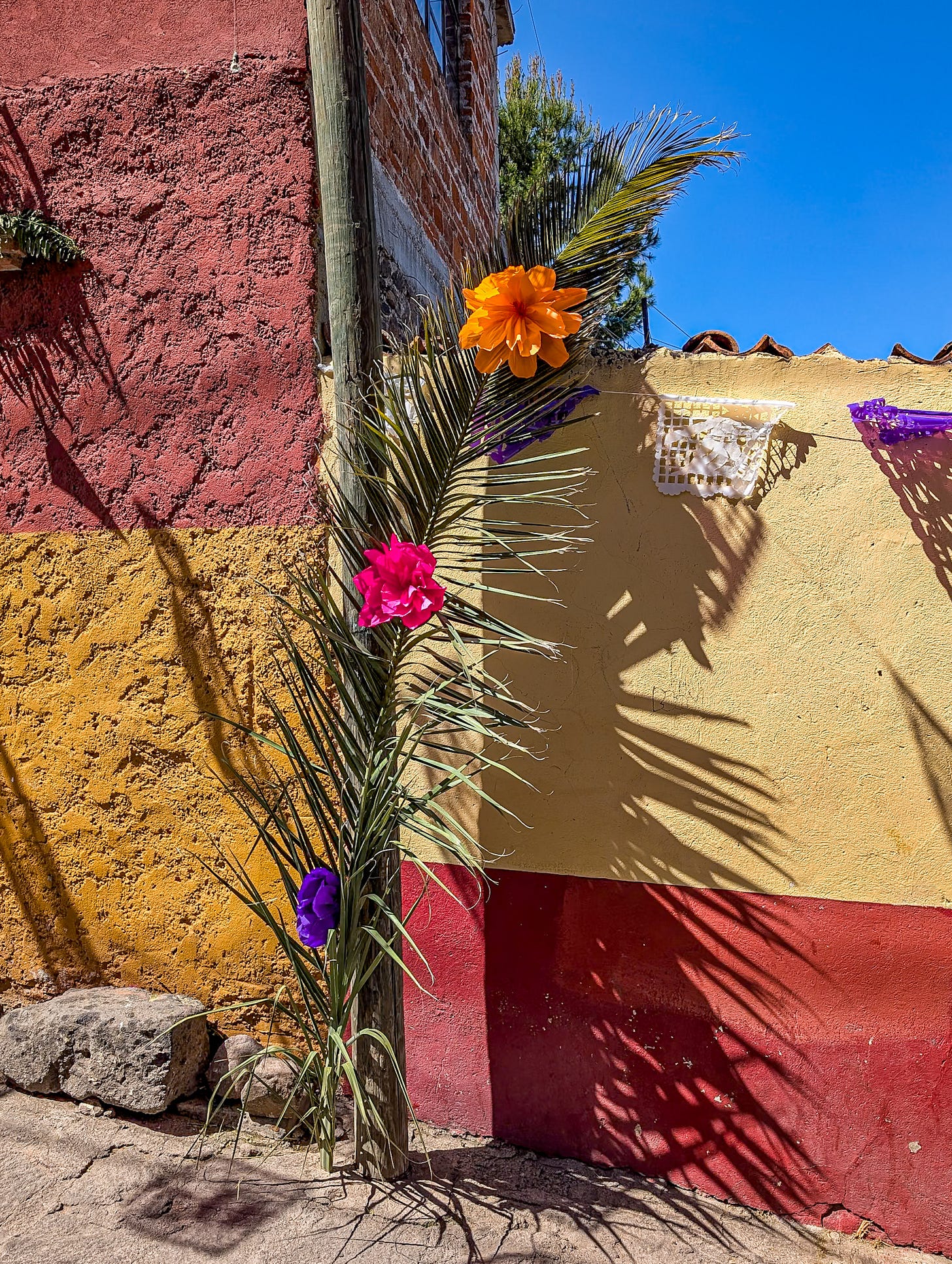

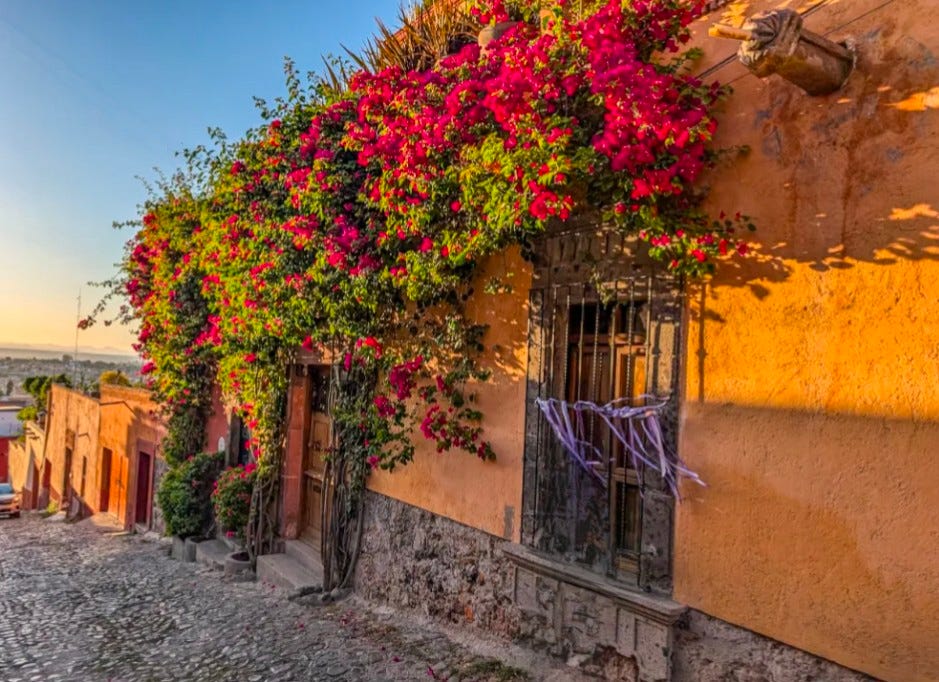
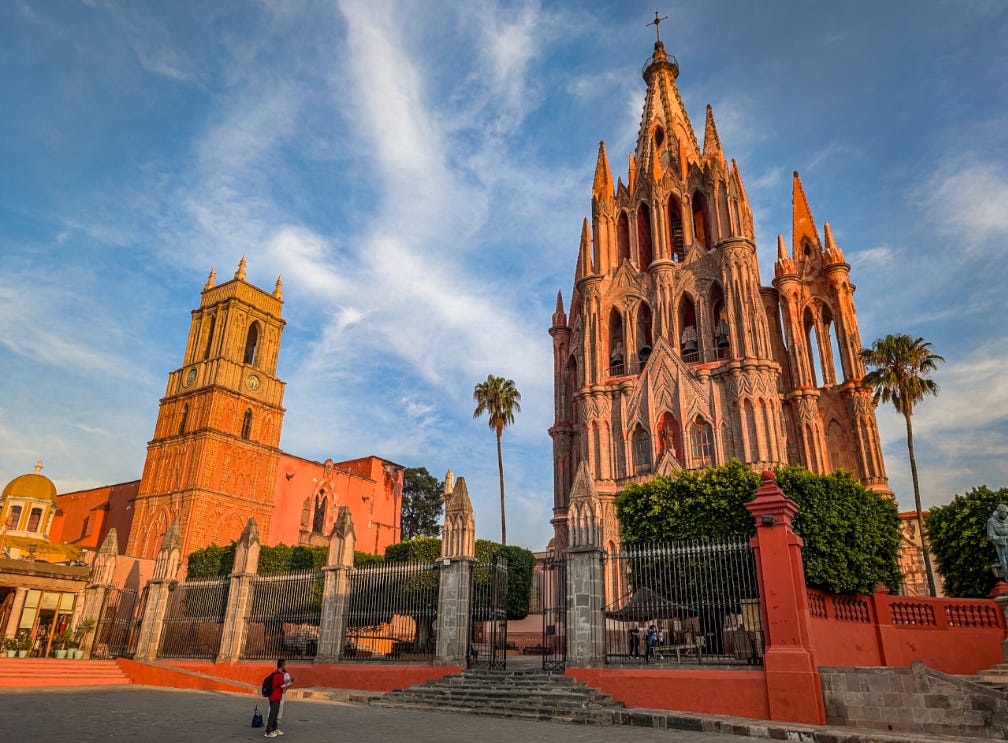
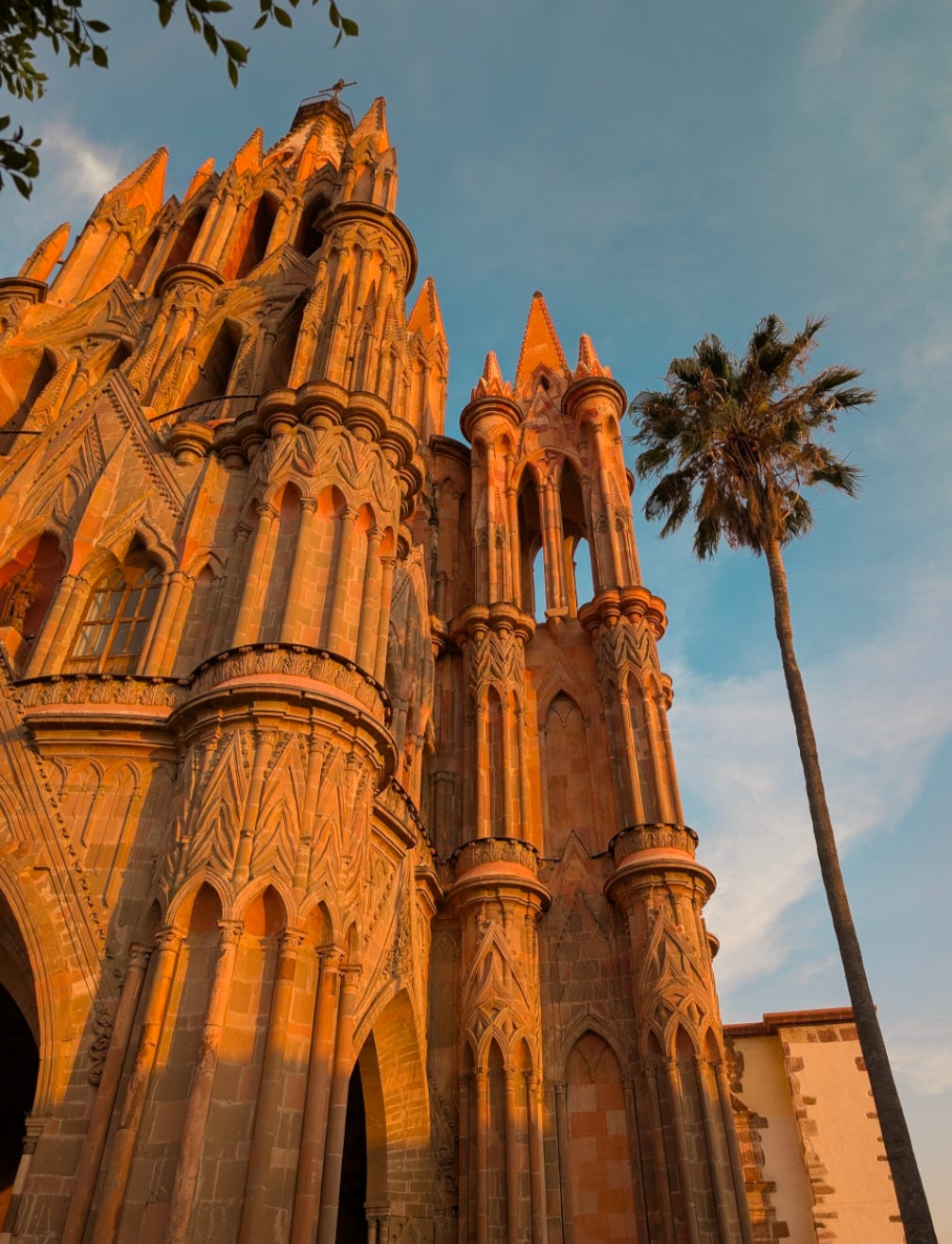
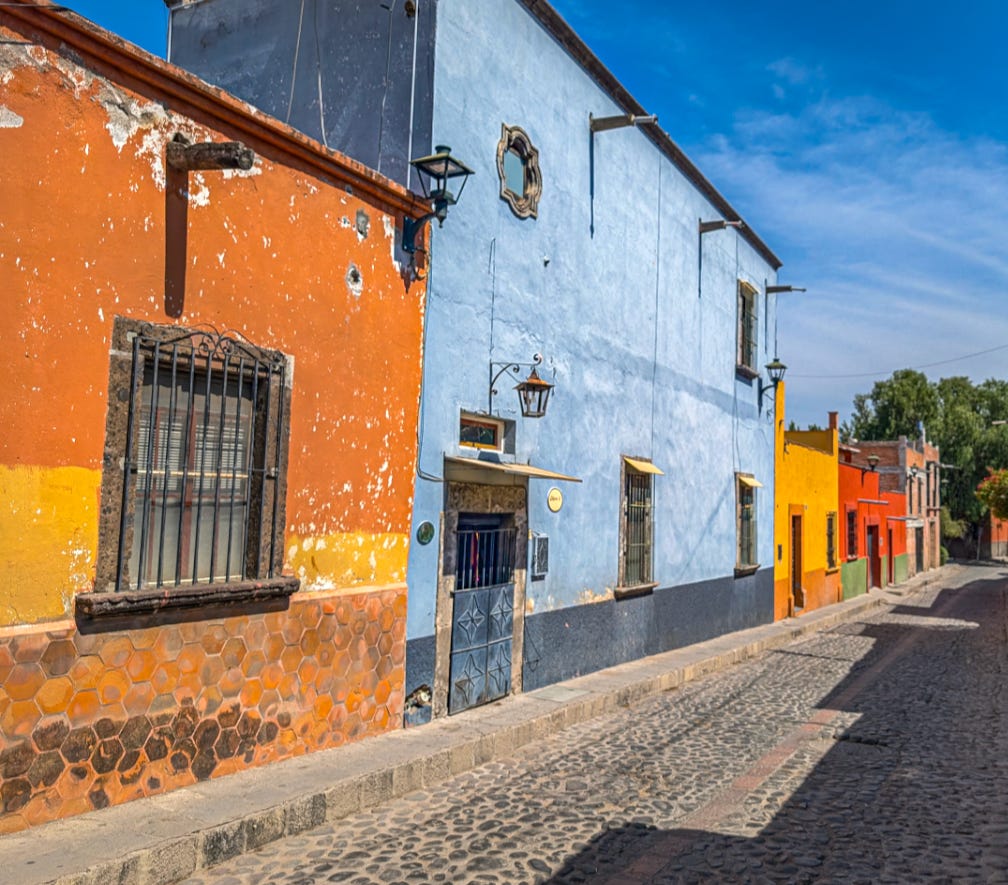
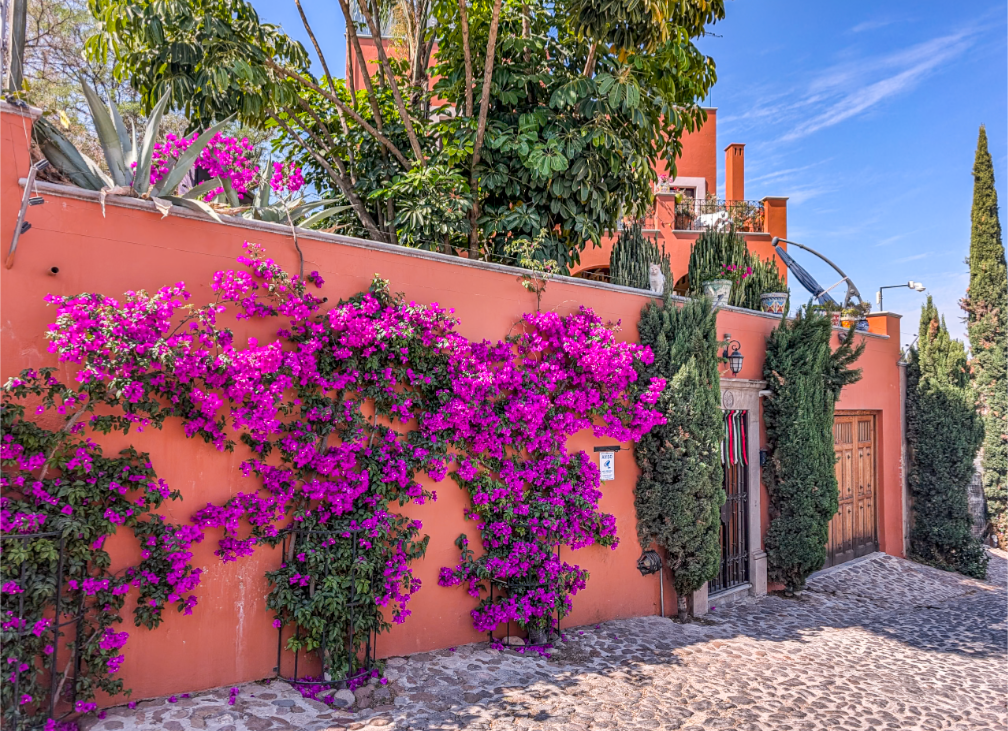
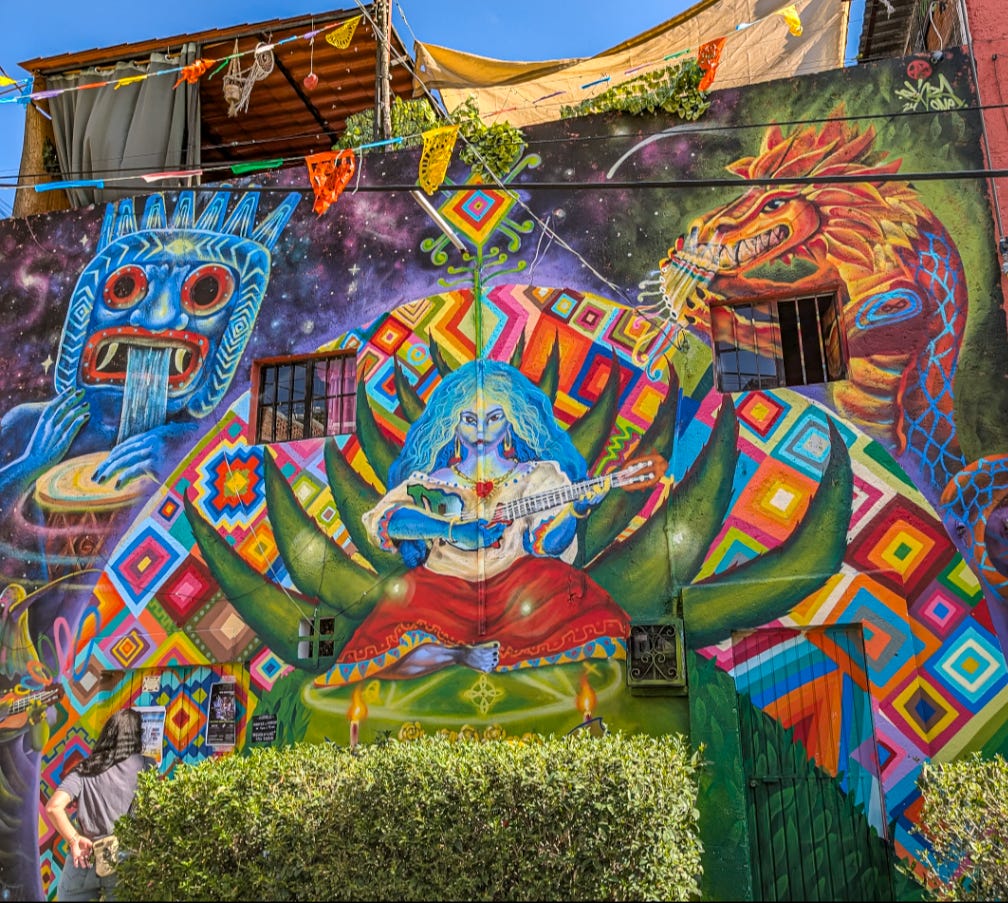
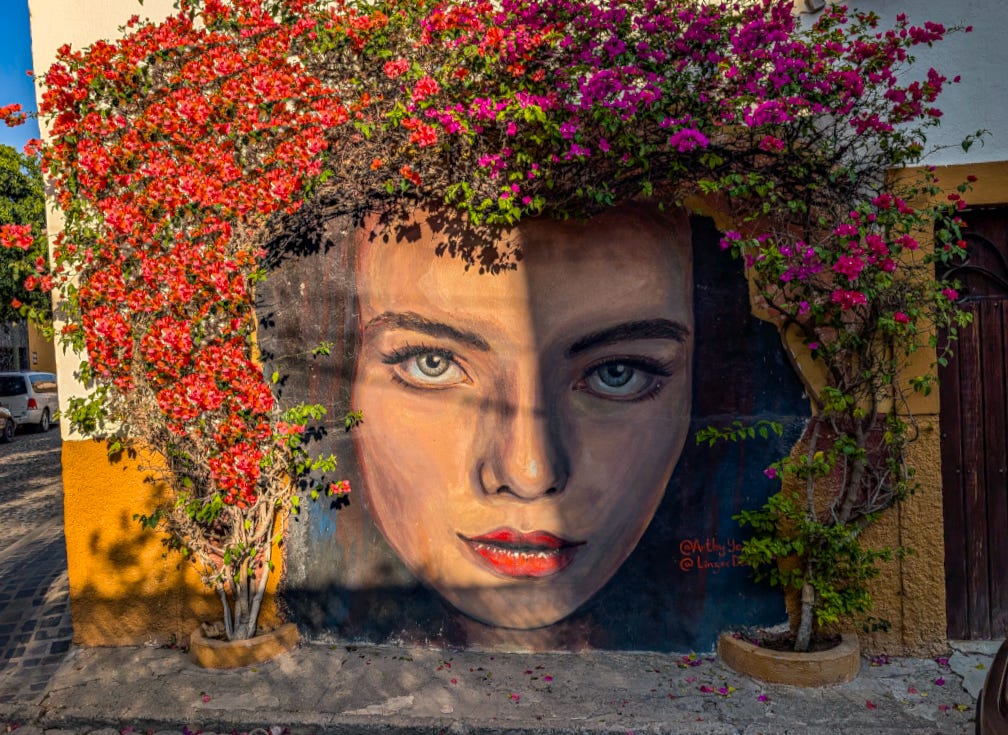

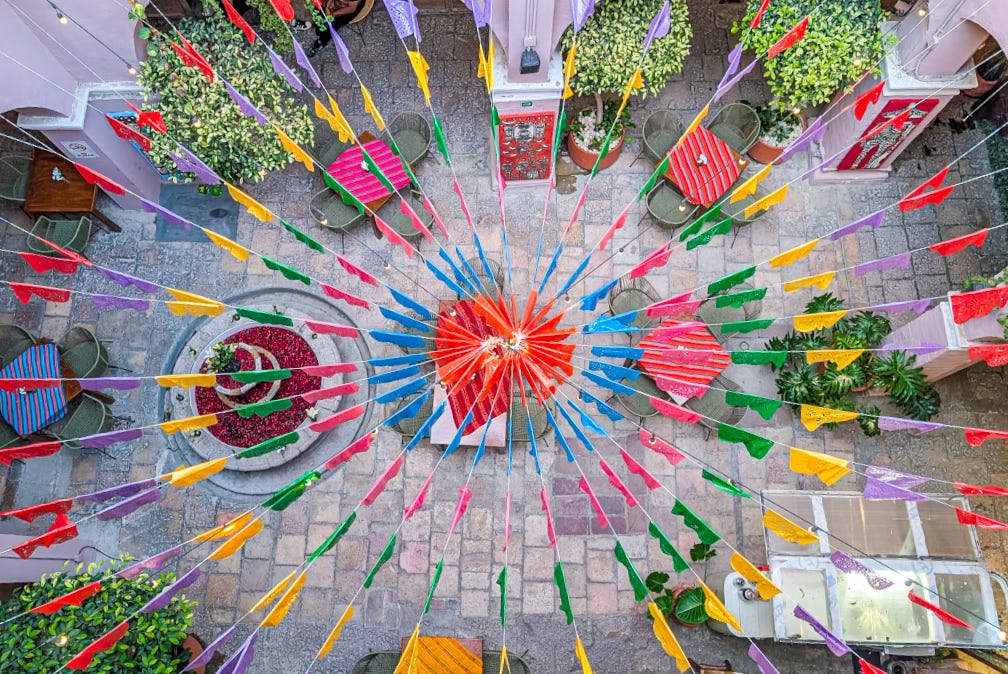

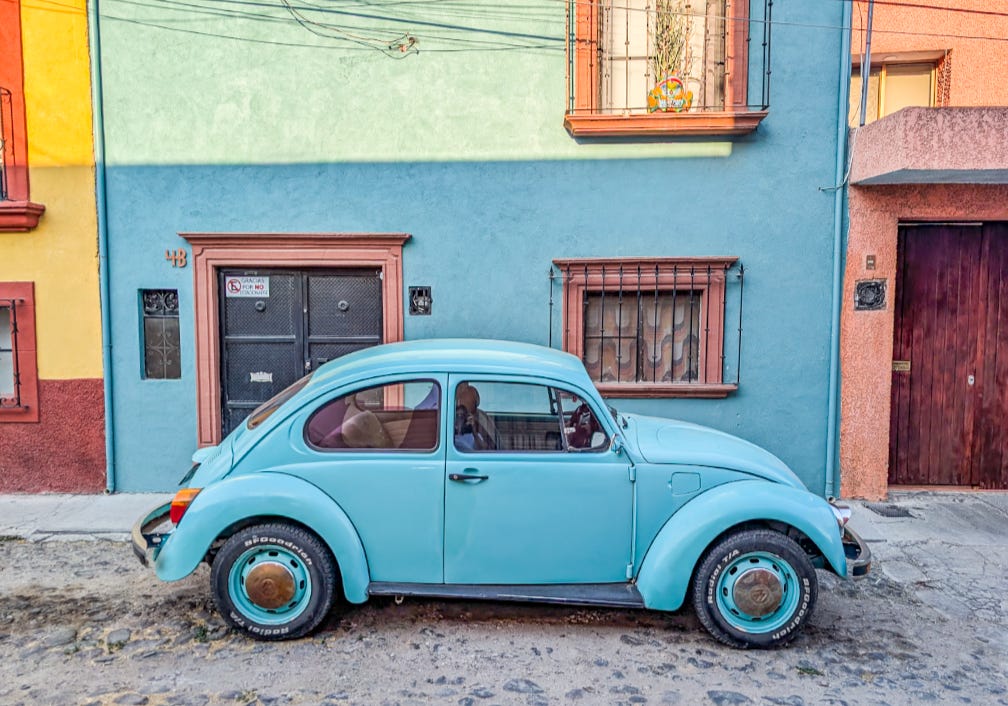
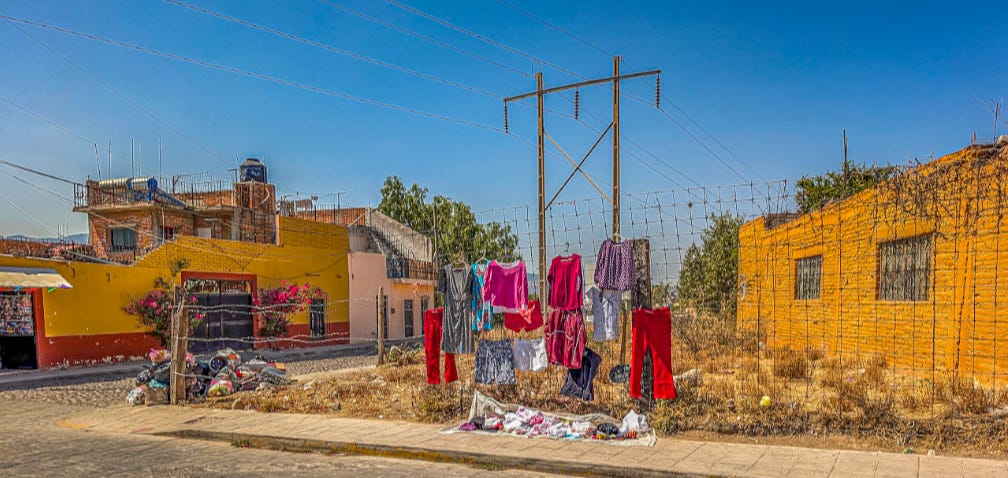

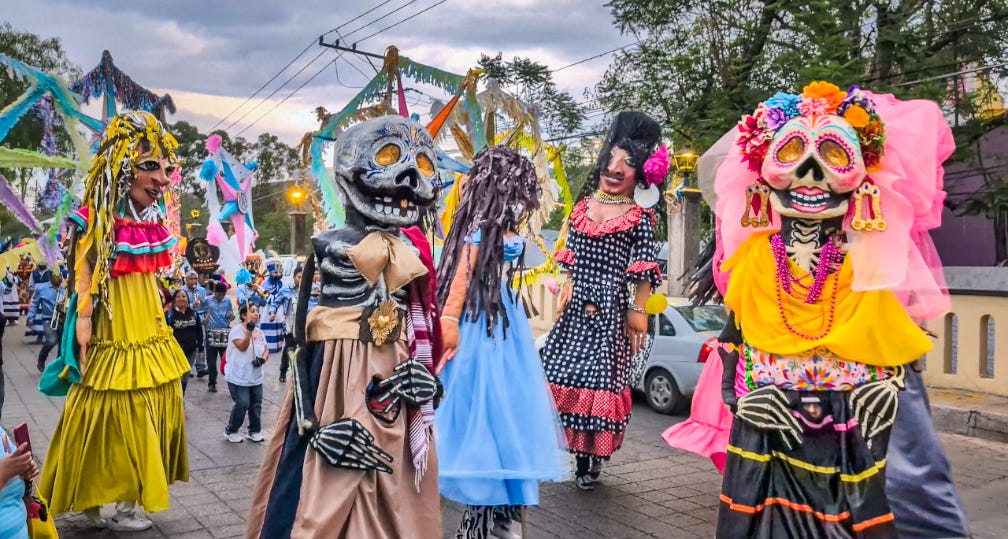
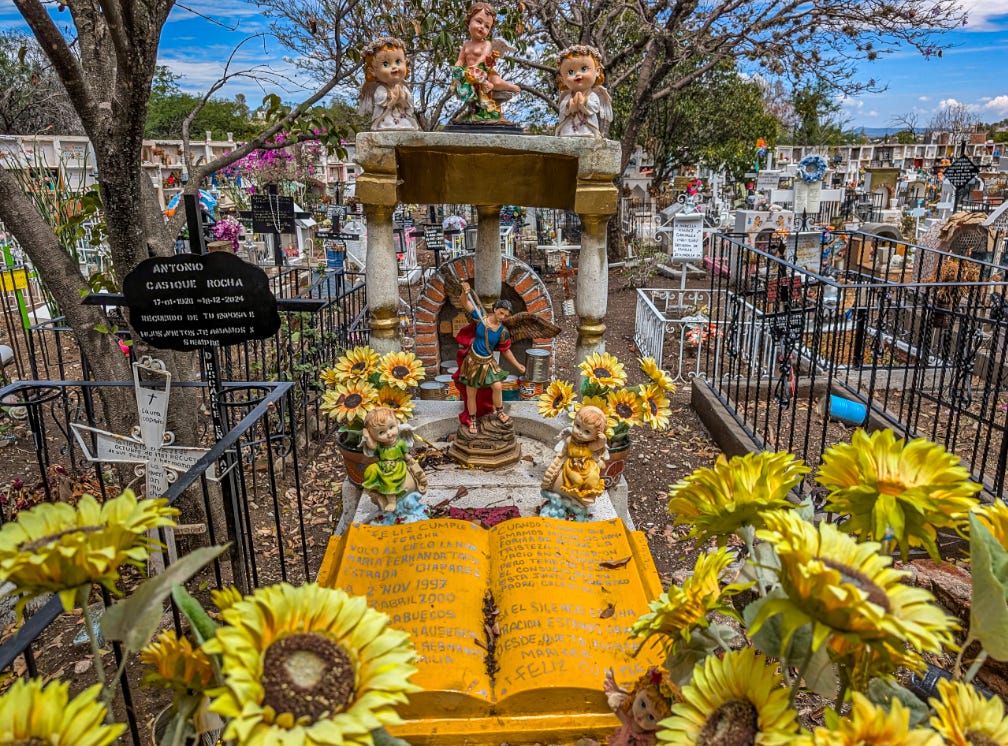
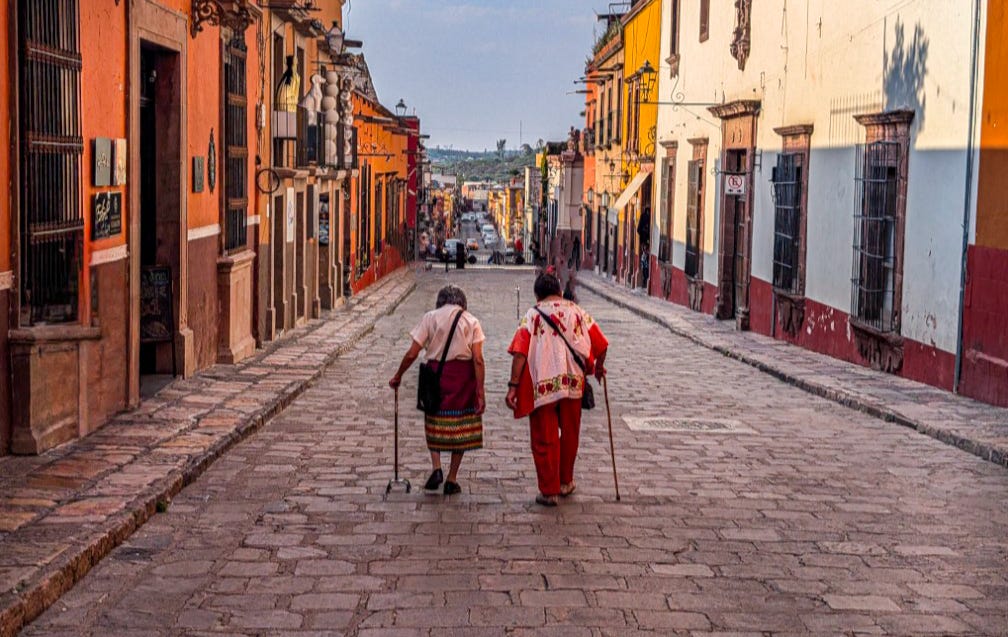
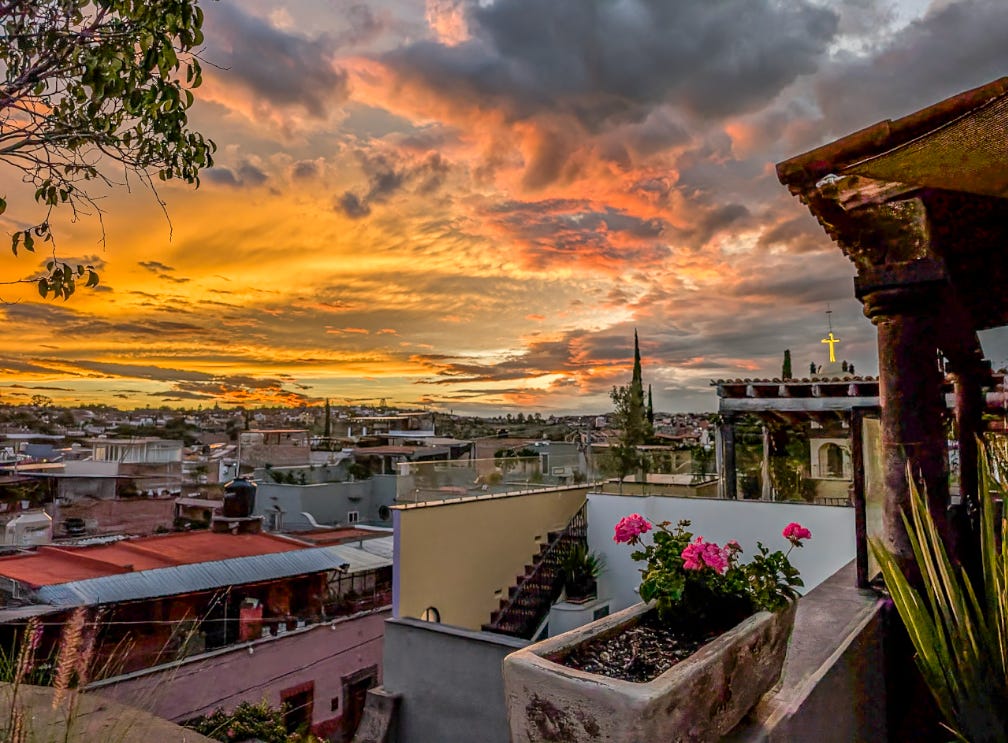
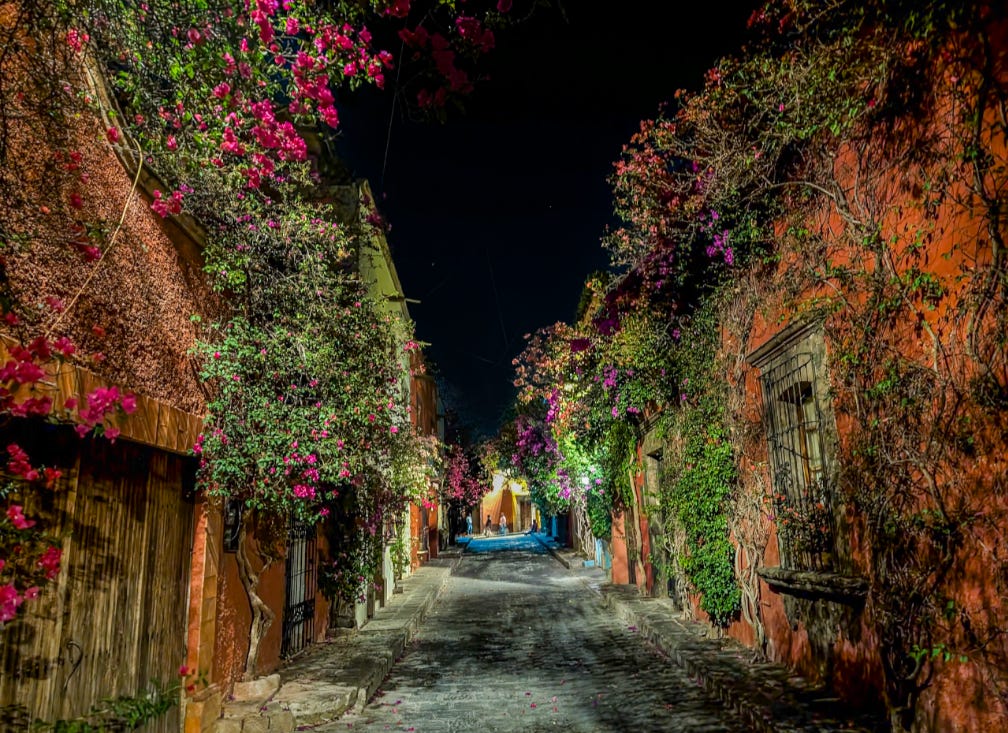
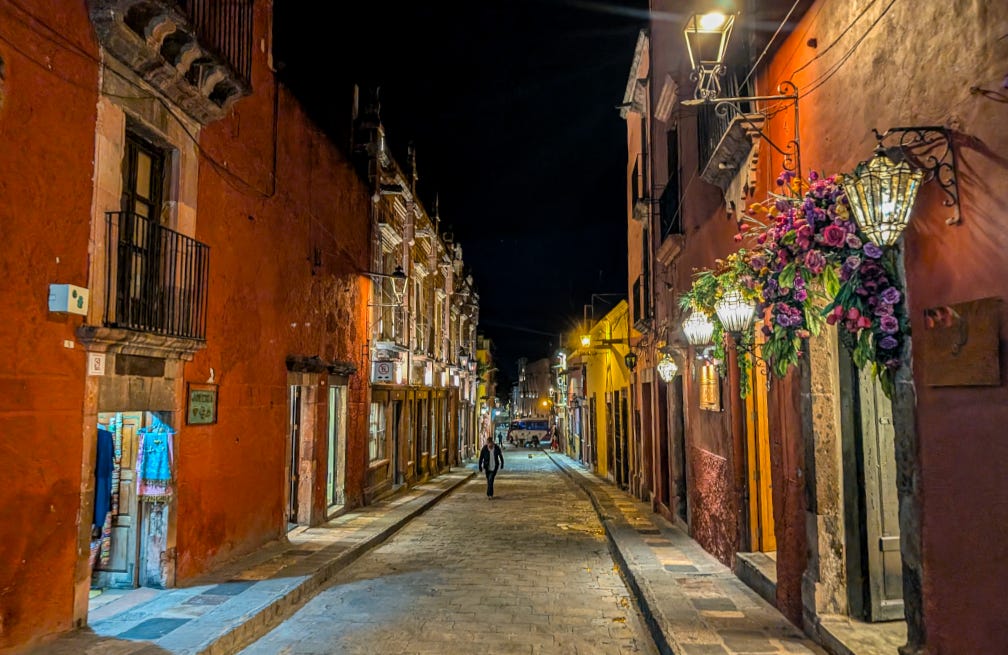
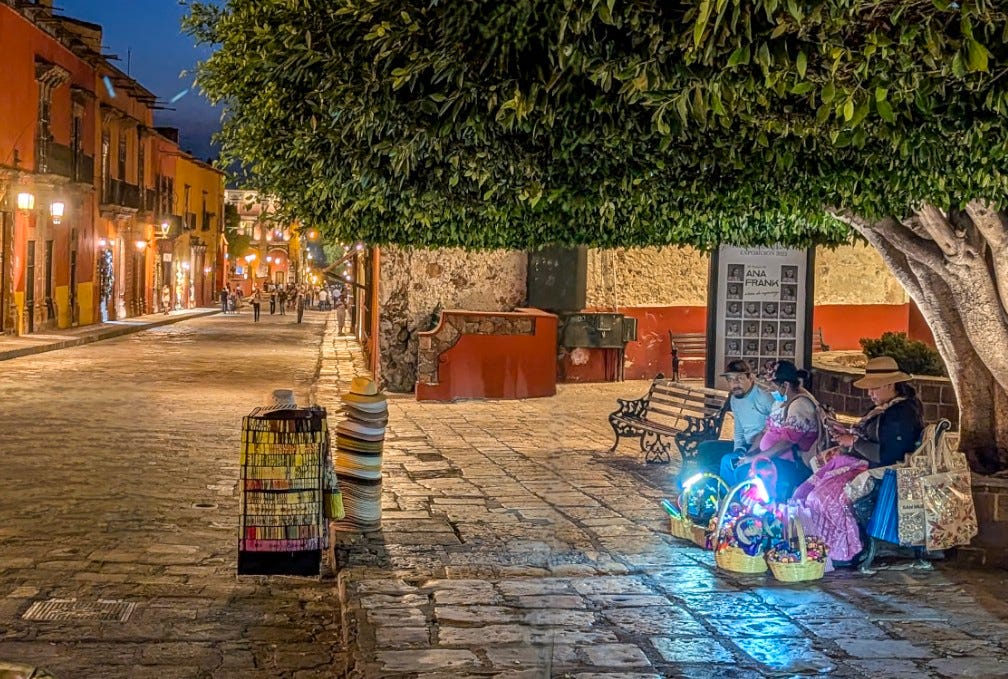
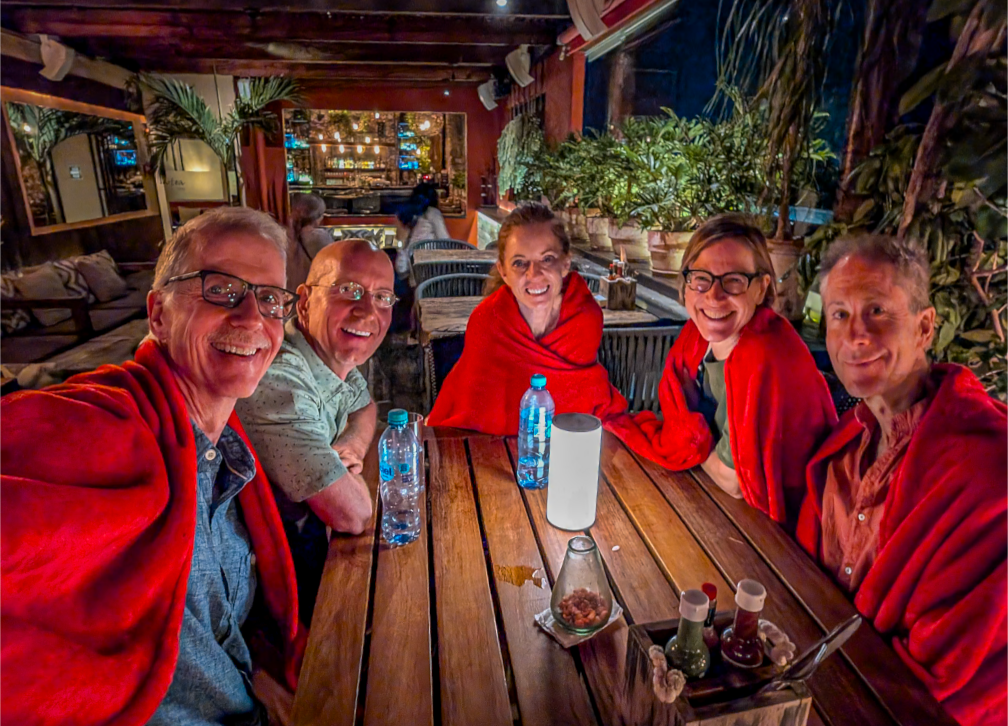

Oh my goodness, what a great article and pictures. What an amazing looking city. And your pictures work so wonderfully well with your story. So, are you at a restaurant in that picture? And did they provide the blankets?
You capture colour beautifully, Michael. Lovely pictures!